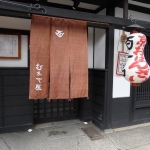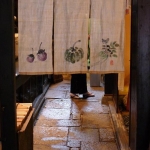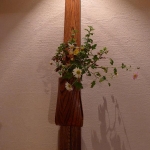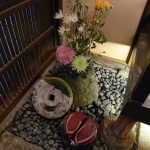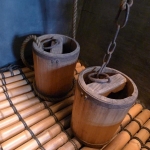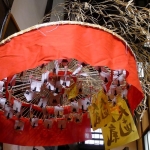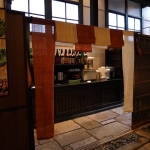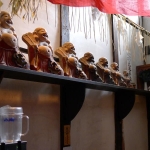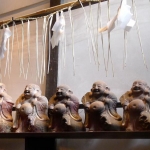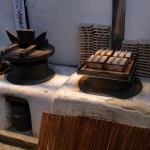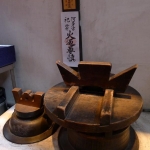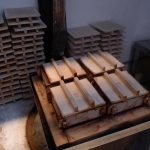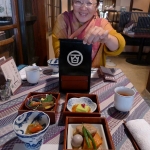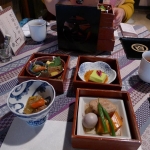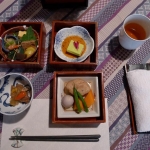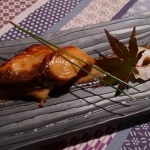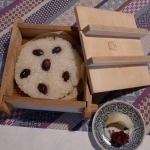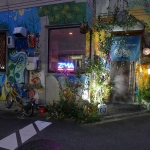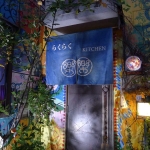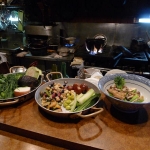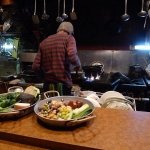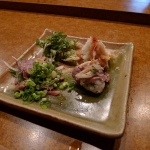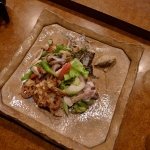Obanzai
Obanzai is a traditional style of Japanese cuisine native to Kyoto. In order for food to be considered obanzai, at least half of its ingredients must be produced or processed in Kyoto. Ingredients in obanzai cooking must also be in season. Obanzai cooking heavily relies on vegetables and seafood, prepared simply. Consistent with the concept of mottainai (a sense of regret concerning waste), another characteristic of obanzai is the incorporation of ingredients which are usually discarded as garbage.
Mukade-ya
I thoroughly enjoyed sharing lunch here in this is atmospheric restaurant located in an exquisite machiya west of Karasuma-dōri. For lunch try the special bentō : two rounds (five small dishes each) of delectable obanzai (Kyoto-style home cooking) fare. Kaiseki (Japanese haute cuisine) courses start at ¥5400. The last plate is the restaurant’s speciality rice with black beans. It brought with nice smell of Japanese cypress from the wooden box. These boxes were used by warriors when traveling.
Mukadeya (百足屋, literally meaning centipede house) is one of these restaurants, located in 5minute-walk from Karasuma staion, center of Kyoto. The centipede name is significant for warriors as it cannot go backwards.
It is known that the house was used by a kimono trader and has been restored as a restaurant.
http://www.ocada.jp/provinces/obanzai.php
http://kokoraya.moss-co-ltd.com/shopdata/english/kokoraya_english.html
Kitchen Raku Raku
Both an obanzai and an izakaya, many people praise the experience of having chef Akira Mizobuchi prepare a meal for them.
That certainly was true for me. I had one of my favorite meals here while staying overnight at Shunkoin Temple at the Myoshinji Temple Complex. See: the http://www.shunkoin.com/
Closed every Monday & 3rd Tuesday
http://akirarhythm.wixsite.com/ezez
Demachi Rororo
This is a small, traditional Japanese restaurant that serves a variety of dishes including lunch box sets. This small, beautifully decorated restaurant is run by a Kyoto-native chef who uses mainly organic vegetables sourced from Ohara, the rural north of Kyoto, in his delicious cooking. At lunchtime, there are only two menu options: a “mini obanzai” (Kyoto traditional fare), which has to be ordered in advance, or a lunchbox (“obento”), which is available on the spot as long as supplies remain.
For the Obento, there are a total of twelve dishes, many of them cold and prepared in advance, but the fried dishes cooked on the spot, so it takes about five minutes to arrive. The rice is cooked in an earthenware pot, making it slightly crispy around the edges. The lunchbox comes with a handwritten explanation, in Japanese, of the contents of each dish. The menu changes twice a month to make use of seasonal produce. All the dishes are beautifully presented. Very popular, so arrive early. In the evening, the food is more elaborate, and more expensive, so lunch is probably the best option for visitors.
11:30 – 14:00, 18:00 – 22:00, closed Tuesdays and the first and third Mondays
Smoking with no non-smoking area


